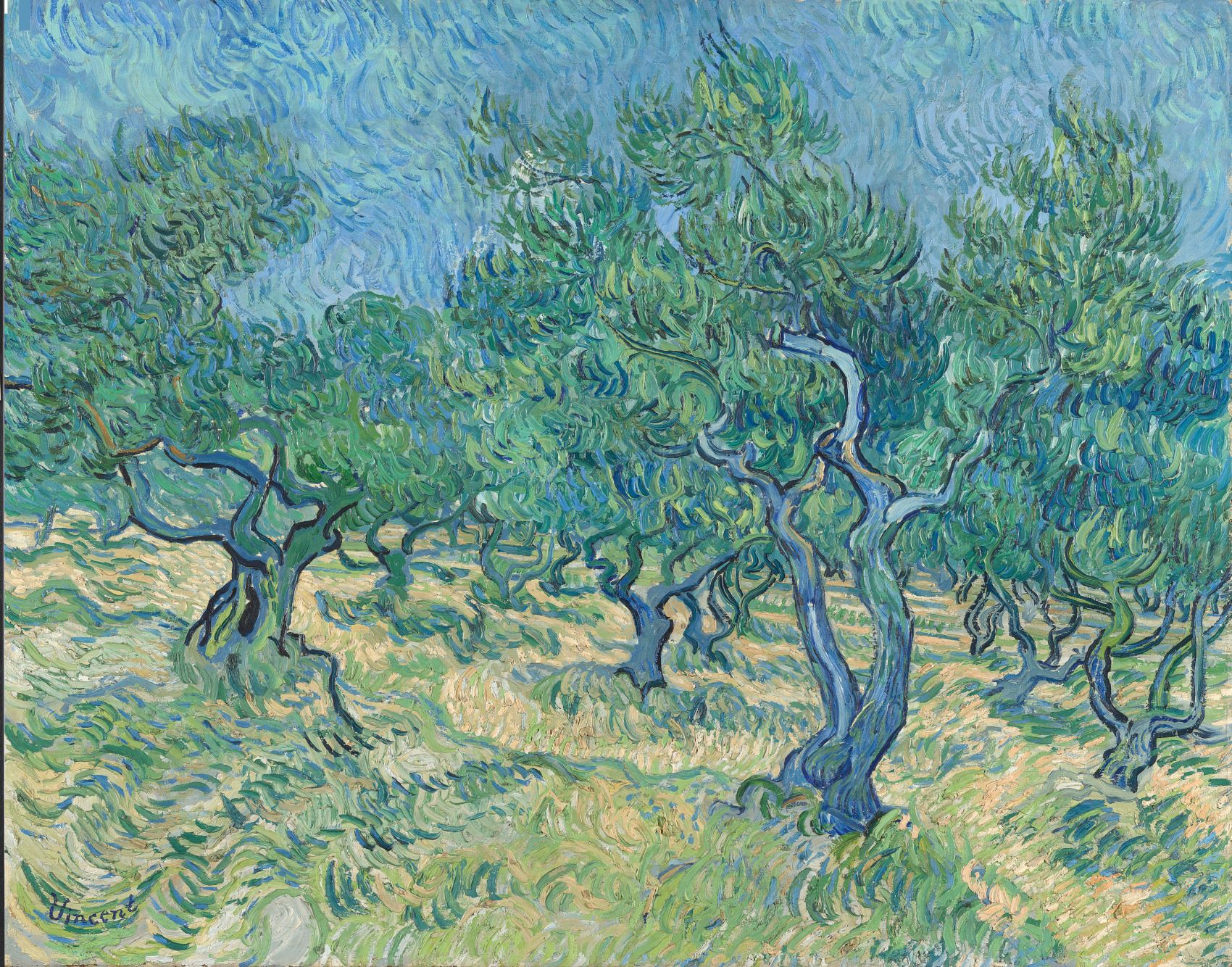Chapter 6 | WORKS OF ART
Chinese artist Ni Youyu makes several paintings of forests. The first image is called Forest 2, a huge painting of 200 x 440 cm.

In Forest 2 the trunks are at about the same distance from each other. There are no branches or leaves painted. The drawing in the trunks is very realistic. The forest seems to continue endlessly into the distance. The further away, the thinner, vaguer and lighter gray the trees are painted. As viewers, we stand in a place where you might rather turn around than enter that infinity. The front two trees run all the way from bottom to top; we do not see where they stand in the ground. Of the other trees we can see where they stand in the ground, each time a little higher to show that a tree is further away. The empty ground almost looks as if some snow has fallen. Ni Youyu calls this well-organized forest European because he also considers Europe to be a reasonably well-organized continent.

The two trees painted by Jacoba van Heemskerck in 1910 are very colorful. Both the trees, the ground, and the sky are carefully composed of individual patches of color/brushstrokes, always in more or less the same direction. Horizontal in the sky, for example, and primarily vertical on the ground. Jacoba clearly didn’t try to paint a kind of photographic scene, but rather to use her imagination. This is precisely what gives this painting its clear simplicity and cheerfulness.

The world-famous Dutch painter Vincent van Gogh painted countless landscapes, including this olive grove in 1889. Old olive trees are beautifully irregular in shape, but Van Gogh has carried this through completely in the ground and sky. The painting obviously lacks the clear simplicity of the previous two masterpieces. The long and short brushstrokes bend, meander, and swirl around each other everywhere. It’s as if the air and earth tremble with the heat of the olive grove, or a strong wind is blowing, setting everything in motion, even his signature in the lower left corner. This unique painting style also suits Van Gogh’s often restless state of mind. His limitation to nuances of blue-green and yellowish earth tones is also completely different from the multitude of colors in the painting by Jacoba van Heemskerck.